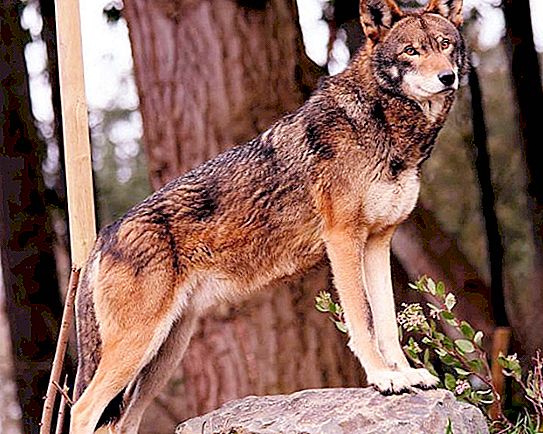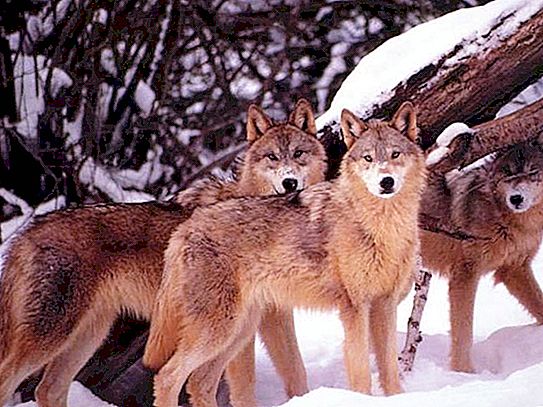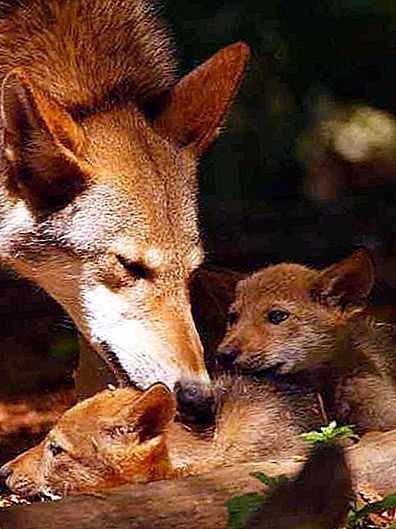In the mountainous areas of South and Central Asia, you can meet an amazing animal. If you just look at the photo, you can hardly say who it is. The structure of the body resembles a jackal, the color resembles a fox, and the behavioral features resemble wolves. People have been hunting them for trophies for hundreds of years, bringing the population closer to the brink of extinction. Let's see what kind of animal it is and how to save it.
Mountain Wolf Description

These animals are very beautiful and smart. Representatives of a rare species of the canine family are called red or mountain wolves, they are closest to their gray relatives by kinship. The animal has a fairly large size: the length of its body is one meter, body weight ranges from 17 to 21 kg. Appearance harmoniously combines the features of three predators: jackal, fox and gray wolf. From the latter, the beast is distinguished by a bright color, a longer tail, which hangs almost to the ground, with fluffy hair. In a mountain wolf, the muzzle is pointed and shortened. Big ears with rounded tips, erect and set high, give it a resemblance to a jackal.
As a rule, a red (or mountain) wolf has a reddish color tone, however, depending on its range, it can be very different. The tail is very fluffy, like a fox, but with a black tip. The fur is tall in winter, very dense, soft and thick, in summer it is darker and coarser. Small wolf cubs are born dark brown and retain this color for up to 3 months. According to the criterion of color, body size and density of the fur, the zoologists described 10 subspecies of the animal, while two of them live in Russia.
Area
The red wolf (mountain) is distributed over a very vast territory, its total number is small. The territory of its habitat extends from the mountains of the Tien Shan and Altai to Indochina and the Malay archipelago. A large number of individuals are found in the mountainous part of South and Central Asia.
As early as the 19th century, the northern border of its habitats reached the Katun River. Now the red wolf (mountain) appears only in the southern part of the Far East, where, apparently, it comes from the adjacent lands of China or Mongolia. There is no exact evidence that the species currently lives in Russia.
Nutrition and lifestyle
The mountain wolf is a typical inhabitant of the peaks and can rise to a height of 4 thousand meters above sea level. During the year, it predominantly stays in the subalpine and alpine zones, hiding in rocks or gorges. On the plains (less often forests, steppes, deserts) can make seasonal migrations in search of food, but does not settle on them. Like many other animals, it lives high in the mountains, where snow covers almost all year round. The predator rarely descends to the foothills or to the southern slopes. It does not come into conflict with a person; attacks on pets are very rare.

The red wolf, mountain and wild, hunts in a flock of individuals of different ages, the maximum number of which does not exceed 12. The behavior in a handful of animals is non-aggressive, without an obvious identification of the leader. They usually go hunting during the day and pursue their prey for a long time. The diet is diverse and includes both small rodents, lizards, and antelopes, deer. A large flock can attack a leopard and a bull. A distinctive feature of hunting is the method of attack - from behind. They do not use the victim's throat grip, as most canids do.
Animals stand out for their secretive nature, try to avoid people, hide in rocky crevices, niches, caves, burrows do not dig. They are distinguished by their delicate hearing and excellent swimming abilities, they make jumps to a distance of 6 meters.
Progeny

Due to the small population and secrecy of animals, their reproduction biology is not well understood. It is reliably known that the red, or mountain, wolf is monogamous, males take an active part in the upbringing of young animals. During life in captivity, the process of active mating begins in winter (approximately mid-January). Pregnancy in females lasts about 60 days, in one litter there are from 5 to 9 puppies.
In India, small cubs are periodically born throughout the year, due to the year-round warm climate. Only born puppies have a dark brown color and look like a German shepherd or an ordinary wolf. After about two weeks, their eyes open, by the age of six months, the animals weigh already as adults. At the age of 2, young growth reaches puberty.




